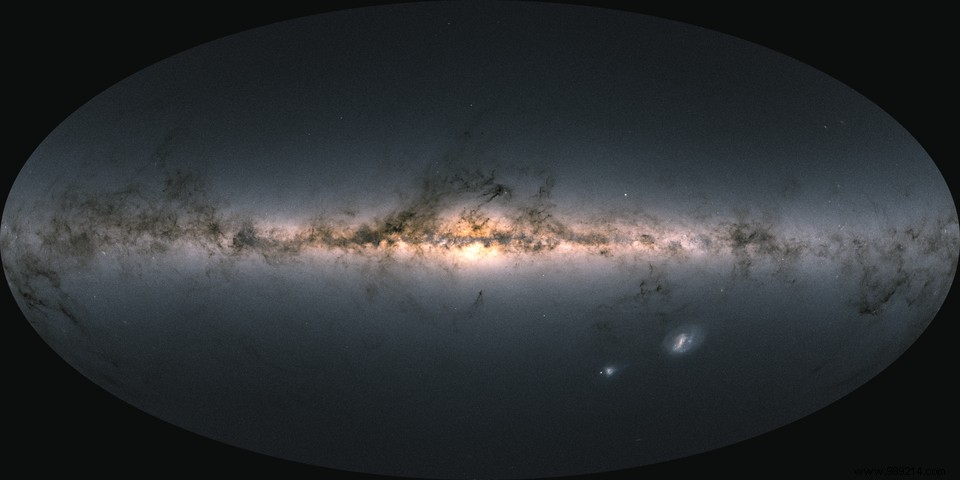01Data from the European Gaia mission reveals that galaxies traditionally thought to be satellites of the Milky Way are actually new to our "cosmic neighborhood". Some will join our galaxy, while others will continue on their way.
Often composed of thousands to billions of stars, dwarf galaxies are the smallest and faintest galaxies in the universe. For a long time, it was widely believed that the dozens of small galaxies surrounding the Milky Way were long-time satellites. Now, new data collected by the European Space Agency (ESA) tells a different story. Details of the study are published in The Astrophysical Journal.
The European Space Agency (ESA) launched Gaia in 2013. It is a satellite with the objective of determining the position, movement and distance of stars of our galaxy in addition to their physical properties. To do this, the observatory operates in an orbit around the Lagrange point 2 (L2), 1.5 million kilometers behind the Earth in the opposite direction to the Sun. The gravitational forces between the Earth and the Sun are balanced there, which stabilizes the ship.
To date, Gaia has allowed us to detail the physical characteristics and positioning of more than 1.8 billion stars in our galaxy. More recently, a team led by François Hammer, from the Paris-University Observatory, used the satellite's capabilities to study the movements of forty dwarf galaxies moving around the Milky Way with unprecedented precision.

For this work, astronomers calculated the three-dimensional velocities of each galaxy. They then used this data to determine their orbital energy and their rotational (angular momentum) energy.
To their surprise, they then discovered that these galaxies are actually moving much faster than giant stars and other star clusters known to orbit the planet. Milky Way. If these objects were real satellites of the Milky Way, then their energies would be much lower. This strongly suggests that they have only arrived in our neighborhood within the past billion years .
This new discovery echoes that made on the Large Magellanic Cloud (LMC), a dwarf galaxy visible in the night sky of the southern hemisphere. Before the 2000s, astronomers thought it was indeed a satellite of the Milky Way. Later, scientists finally realized that this object was moving too fast to be gravitationally bound to our galaxy. Concretely, the researchers have just made the same observation for dozens of other dwarf galaxies.
As for the future of these galaxies, it is uncertain. Some could one day be captured by the Milky Way to become real satellites, while others will continue on their way. Determining it, however, remains notoriously difficult. Indeed, everything depends on the exact mass of the Milky Way. However, estimates today vary by a factor of two.